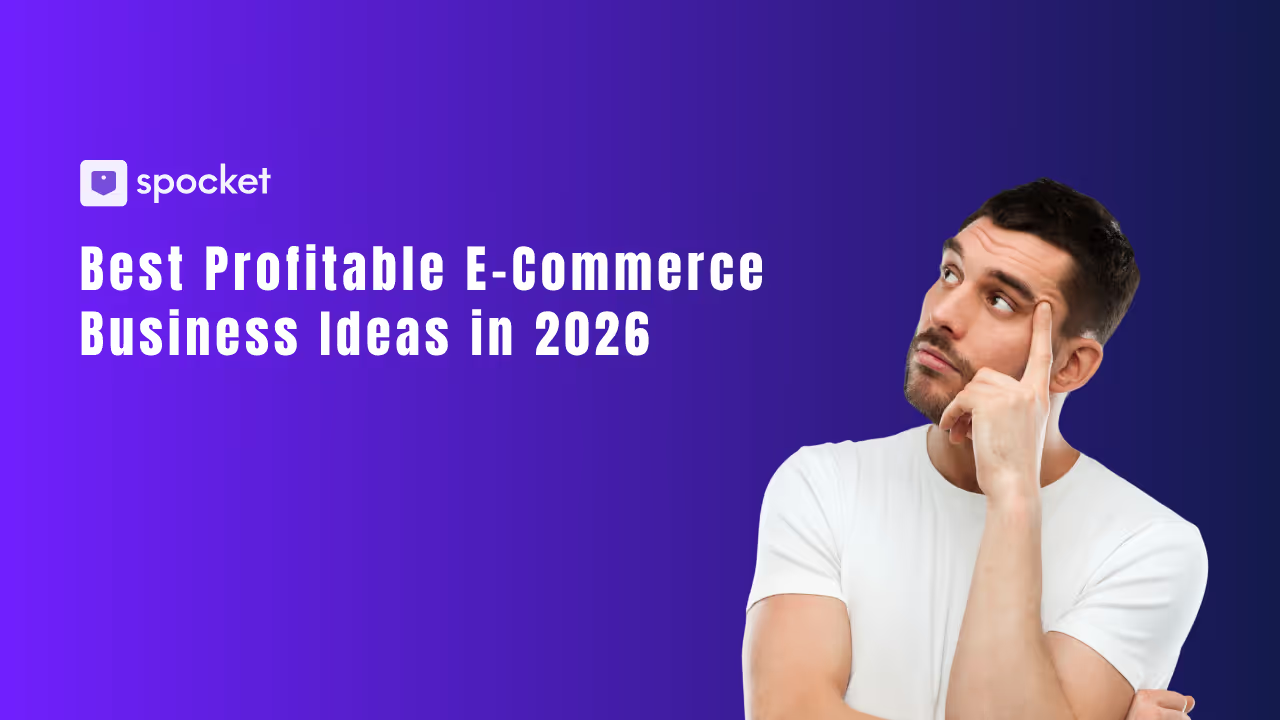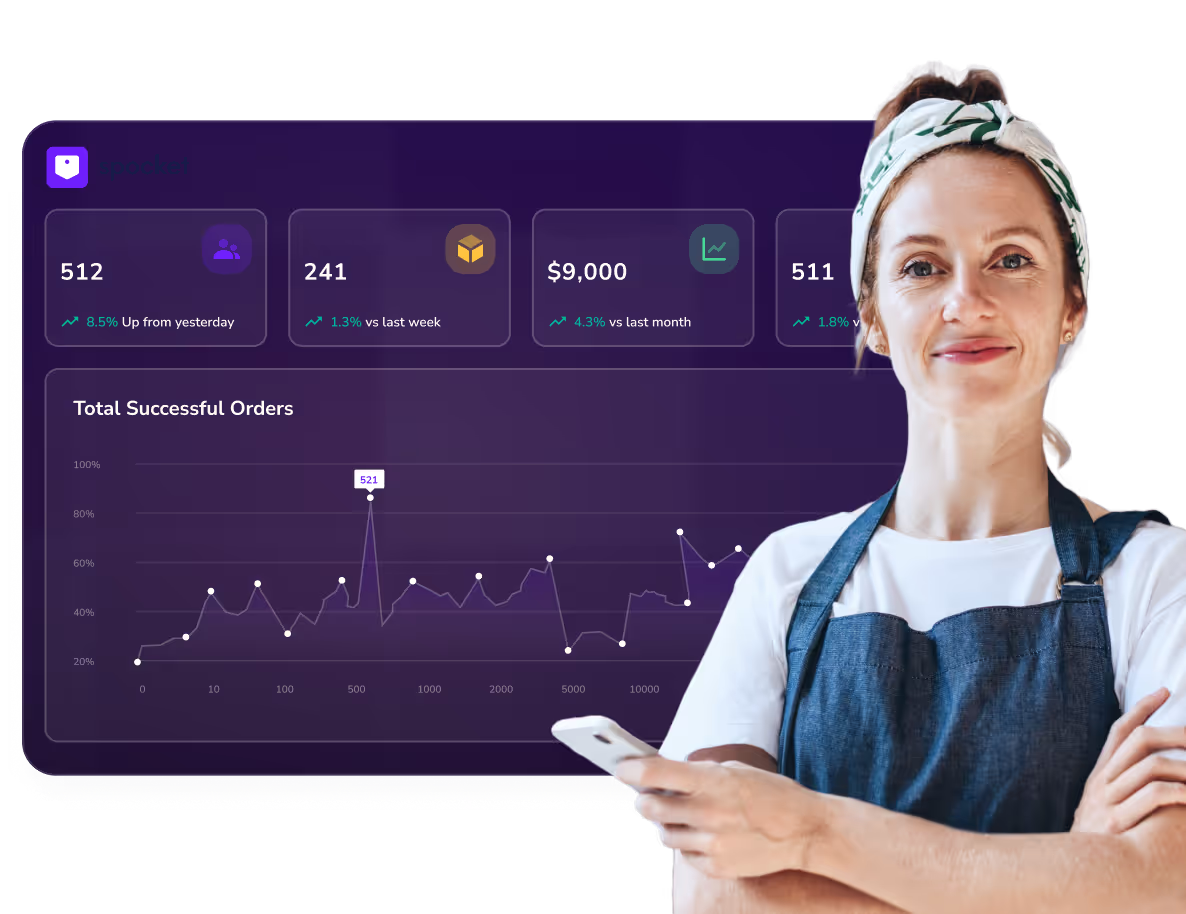Running an online store is exciting, but let’s be real—presenting products in a way that grabs attention isn’t easy. Most small ecommerce sellers don’t have big budgets for designers. You might feel stuck with plain product photos that fail to convert.
That’s where AI styling for ecommerce comes in. Tools like stylesi.ai give you the power to style, present, and even personalize product visuals—without needing design skills. Imagine creating professional-looking displays, interactive spins, or styled product shots all on your own.
In this guide, I’ll walk you through 10+ creative, budget-friendly product presentation techniques that anyone can use. From 360 product spins to DIY visuals, you’ll learn how to make your store look polished, professional, and click-worthy—all without hiring a designer. Ready? Let’s dive in.
Why Product Presentation Matters (Beyond Pretty Images)
Think about the last time you bought something online. Did you read every word in the description, or did the product images do most of the convincing? For most shoppers, it’s the visuals that seal the deal. That’s exactly why your product presentation is your silent salesperson.
Conversion and Trust: Make Shoppers Feel Safe
Shoppers hesitate when they can’t “touch” the product. They wonder: Will it look the same in real life? Am I wasting money? That hesitation kills sales. High-quality, styled visuals remove those doubts instantly. They build trust, which directly translates into higher conversions. With AI styling for ecommerce, you can now create those confidence-boosting images without hiring a pro.
Reduced Returns, Higher Perceived Value
Here’s a hard truth: unclear visuals cause returns. Customers order thinking the item will look one way, then get disappointed. Returns eat into your margins and damage your brand. But when you show every detail—texture, fit, size, lifestyle shots—shoppers know exactly what they’re buying. That’s how you lower returns and boost perceived value. Suddenly, your product doesn’t just look “affordable.” It looks premium.
SEO and Engagement: Keep Visitors Around Longer
Google notices when shoppers spend more time on your store. The longer they scroll, zoom, and engage, the better your rankings. Creative visuals—like a 360 product spin or styled mockups—keep them exploring. And when customers share those eye-catching shots on social media, you get free traffic. It’s a loop that starts with better presentation.
Why Stylesi.ai Gives You the Perfect Head Start
Here’s the part most sellers miss: you don’t need to build everything from scratch. stylesi.ai already provides SEO-optimized product listings, polished images, and descriptions. That’s your solid foundation. From there, you simply layer on your creative product presentation techniques—like adding lifestyle mockups or DIY spins—to stand out. Platforms like Tekpon even point out how stylesi.ai saves time and gets your products “market-ready” from day one.
When you combine a strong base with your own creativity, your store starts looking like it had a designer touch—without the designer price tag.
Key Principles Before You Begin (for Consistency & Scale)
Before diving into creative product presentation techniques, it’s important to get the basics right. Think of this as your styling “blueprint.” Without it, even the best visuals will look random and inconsistent. The good news? You don’t need a design degree to pull this off. With smart planning—and tools like stylesi.ai for AI styling for ecommerce—you can create a look that feels professional and consistent across your entire store.
Use Visual Templates & Mood Boards
Here’s a secret: designers don’t start from scratch. They build mood boards. A mood board is simply a collection of colors, fonts, image styles, and “vibes” that define your brand’s look.
Quick DIY Mood Board Template you can copy:
- Brand Colors: Choose 2–3 colors you’ll use everywhere.
- Font Style: Stick to one for headings and one for body text.
- Image Style: Decide on lifestyle, flat-lay, or studio shots.
- Inspiration Shots: Save 5–10 product photos from brands you admire.
Use free tools like Canva, Figma, or Pinterest to create your board. Then, whenever you upload a new product, check if it matches your board’s style. This is how you create a cohesive brand feel—even without a designer.
Limit Color & Layout Variants
Too many colors or layouts confuse shoppers. Keep things simple. For example, use one consistent product card layout and stick to a small color palette. It makes your store feel polished, not patchy.
Tip: stylesi.ai already provides SEO-optimized product listings with clean layouts. You can customize them slightly, but resist the urge to reinvent the wheel. Consistency is your secret weapon.
Use Consistent Lighting & Backgrounds
Imagine walking into a store where every shelf has different lighting—it feels chaotic, right? Online stores are no different. Your product photos should have the same lighting and background style.
You don’t need studio gear. A bright window and a simple white or neutral backdrop work wonders. Or, if you prefer variety, keep it themed—like all outdoor shots or all minimalist backdrops.
Pro move: order samples from stylesi.ai, shoot them yourself, and then keep the same lighting setup for all future photos. That’s how you create scroll-stopping but consistent product visuals.
Prioritize Mobile-First Formats
Most of your shoppers are browsing on their phones. That means your images, videos, and even 360 product spin features should load fast and look sharp on small screens.
- Use vertical or square formats for better fit.
- Test your store on different devices before publishing.
- Compress images without losing quality (free tools like TinyPNG work well).
Create a Reusable “Design System” for Your Product Pages
Think of a design system as your style rulebook. It covers everything from button colors to image sizes. With one in place, you won’t waste time making styling decisions every time you upload a product.
Your design system should include:
- Standard image dimensions
- Font sizes and styles
- Color usage rules
- Layout guidelines for product cards, galleries, and descriptions
Here’s where AI styling for ecommerce makes life easier. Platforms like stylesi.ai give you a ready-to-go product framework—images, SEO tags, and clean layouts. You just build on top of that with your own creative touches.
10 Creative Presentation Techniques (No Designer Required)
You don’t need a big budget or fancy team to create visuals that sell. With these product presentation techniques, you can make your store look like it was styled by a pro. Let’s explore 10 powerful ideas you can start using today.
1. 360° / Spin Photography (Interactive Product Rotation)
What it is: A rotating, clickable product photo that lets shoppers view the item from every angle.
Why it works: 360 product spin reduces purchase hesitation because it mimics the in-store experience. Customers feel more confident when they can “turn” the product.
.avif)
How to do it:
- Place your product on a simple turntable (cheap ones are available on Amazon).
- Use your smartphone to take 24–36 shots as the product rotates.
- Upload the photos to a free spin creator like Sirv or Webrotate 360.
- Embed the interactive spin on your product page.
Mini example: Import a handbag from stylesi.ai, order a sample, and shoot a DIY 360 spin. Suddenly your shopper can check every detail—from zipper to strap length—without guessing.
2. Zoom & Pan Micro-interactions
What it is: Interactive zoom that lets customers hover or pinch to see product details.
Why it works: Shoppers want to see textures, stitching, or fine details. A zoomable image reduces doubts and makes your store feel premium.
.avif)
How to do it:
- Use Shopify apps like Magic Zoom Plus or free WordPress plugins.
- Upload high-resolution product images (at least 1000px wide).
- Enable hover-to-zoom on desktop and pinch-to-zoom on mobile.
Mini example: Upload stylesi.ai’s SEO-optimized images and add zoom. Now shoppers can check fabric details before they buy.
3. Product Videos / Micro-clips / Loops
What it is: Short clips (5–15 seconds) showing your product in use.
Why it works: Video increases conversions because buyers can see how the product moves, fits, or functions.
How to do it:
- Use your smartphone to shoot natural clips (unboxing, try-ons, product in action).
- Edit quickly with free apps like CapCut or InShot.
- Upload as autoplay loops on your product page.
Mini example: Film a Stylesi dress twirling in natural light. Loop it. Your store instantly feels more alive.
4. Augmented Reality Previews (AR) or “Try On / In Room” Views
What it is: Shoppers can place the product in their real environment or “try it on” virtually.
Why it works: AR builds confidence and reduces returns. Customers see how an item fits into their lives before purchasing.
.avif)
How to do it:
- Use Apple’s AR Quick Look or WebAR tools like echoAR.
- Generate 3D models from product images using AI tools like Kaedim.
- Embed AR files into your store for mobile shoppers.
Mini example: Import a pair of sneakers from stylesi.ai and let shoppers virtually “place them” on the floor next to their current shoes.
5. Animated Overlays & Hotspots (Tooltips on Hover)
What it is: Interactive dots or highlights on product images that reveal extra details.
Why it works: Keeps your product page clean while still providing detailed info.
How to do it:
- Use plugins like ThingLink or Shopify hotspots apps.
- Add tooltips for features like “Waterproof,” “Eco Fabric,” or “Limited Edition.”
Mini example: Highlight “vegan leather” and “hand-stitched” features on a Stylesi handbag with hover hotspots.
6. User-Generated Content (UGC) Integration
What it is: Show photos or videos from real customers directly on your product page.
Why it works: Social proof converts. Seeing real people using the product builds trust faster than brand visuals.
How to do it:
- Collect customer reviews with images via Loox or Yotpo.
- Showcase UGC in a gallery under your main images.
- Incentivize buyers with discounts in exchange for photos.
Mini example: Encourage Stylesi buyers to tag your store on Instagram. Display their photos directly on your product page.
7. Styled Composite / Contextual Mockups
What it is: Place your product in a lifestyle setting—like a mug on a cozy desk or a jacket in a city street.
Why it works: Helps shoppers imagine the product in their own lives.
How to do it:
- Order samples from stylesi.ai.
- Shoot them, then use Canva, Figma, or AI tools like DALL·E to blend them into styled backgrounds.
- Keep the background consistent with your brand mood board.
Mini example: Take a Stylesi hoodie and place it in a trendy café mockup. The context makes it 10× more appealing.
8. Bundle / Multipack Layouts
What it is: Show products grouped together in one styled image.
Why it works: Encourages bigger cart sizes and makes bundles feel like a better deal.
.avif)
How to do it:
- Photograph 2–3 products together (using the same lighting).
- Or create a composite bundle image using Canva mockups.
- Highlight savings or “perfect pairings.”
Mini example: Display a Stylesi top, skirt, and matching bag as a single “weekend look” bundle.
9. Before / After / Comparison Sliders
What it is: An interactive slider that shows two images side by side.
Why it works: Perfect for transformations or product upgrades—customers see the value instantly.
How to do it:
- Use free slider plugins like TwentyTwenty.
- Upload “before” and “after” shots.
- Embed the interactive slider on your page.
Mini example: Show a basic flat-lay photo of a Stylesi jacket as the “before,” then a styled lifestyle shot as the “after.”
10. Interactive Carousels / Swipe Galleries
What it is: A swipeable gallery of product images and videos.
Why it works: Mimics the Instagram browsing experience customers already love.
How to do it:
- Use carousel apps on Shopify or native sliders in WooCommerce.
- Mix product images, UGC, and short clips.
- Test auto-scroll vs manual swipe.
Mini example: Create a Stylesi carousel showing front, back, 360 spin, and lifestyle shots of a product—all in one swipeable gallery.
How to Use stylesi.ai as a Foundation for Better Presentation
Here’s the truth: styling products from scratch can feel overwhelming. You worry about photos, SEO, and consistency. That’s where stylesi.ai becomes your shortcut. It’s not just about sourcing—it’s about giving you a solid starting point for AI styling for ecommerce. Let’s break down how you can use it as the base for your creative product presentation techniques.
Import Products Directly into Your Store
Instead of manually uploading every detail, you can import products from stylesi.ai in just a few clicks. Each listing comes with high-quality images and ready-to-use descriptions. This saves hours of work and helps you stay focused on growing your business rather than formatting product pages.
Order Samples and Make Them Your Own
Want visuals that look unique to your brand? Order product samples directly from stylesi.ai. With fast delivery times, you’ll get items in hand quickly. Then, style them your way—shoot lifestyle photos, record videos, or create a 360 product spin with just your smartphone and a turntable. This gives your store a personal touch while keeping the quality top-notch.
Use SEO-Optimized Listings as Your Baseline
One of the best things about stylesi.ai is that its product listings are already SEO-optimized. Tekpon highlights how this boosts discoverability and saves sellers time on writing keyword-rich descriptions. Use these listings as your baseline. From there, layer on your creative ideas—mockups, UGC, styled shots—to stand out even more.
Automate Workflows for Consistency
Think bigger. Instead of editing each image one by one, automate your styling process. Batch-edit product photos, overlay brand colors, or generate mockups in bulk using AI tools. Sellers even set up scripts that auto-generate lifestyle backgrounds or DIY product visuals ecommerce mockups from Stylesi’s base images. This keeps your store consistent and saves you countless hours.
Why stylesi.ai Makes It Easier
Fast delivery, SEO metadata, and sample orders aren’t just “nice-to-haves.” They’re growth accelerators. Reviews on stylesi.ai show how these features let small sellers compete with big brands—without hiring designers or investing in expensive tools. Pair that with your creativity, and suddenly your store feels premium, polished, and professional.
Workflow & Tools Cheat Sheet for Non-Designers
You don’t need expensive software or a design degree to make your store look professional. All you need is a smart workflow and the right tools. With stylesi.ai as your starting point, you can layer these easy hacks to create consistent, high-converting product visuals.
Handy Tools for DIY Styling
Here’s a quick cheat sheet. Bookmark it—you’ll use these often.
Suggested Weekly Workflow
Keep it simple. Consistency matters more than perfection.
- Monday: Import 5–10 new products from stylesi.ai.
- Tuesday: Order samples you want to personalize (optional).
- Wednesday: Batch-shoot photos (same lighting + background).
- Thursday: Create DIY product visuals ecommerce like mockups, carousels, or spins.
- Friday: Optimize images (resolution, size, format). Add SEO-friendly alt tags.
- Monthly: Review performance. Which visuals get more clicks, longer views, or fewer returns? Double down on those product presentation techniques.
Quick Checklist Before Publishing
Don’t hit publish until you tick these boxes:
- Resolution: at least 1000px for zoom/clarity.
- File size: under 300KB for fast loading.
- Format: WebP or JPEG for web speed.
- Alt tags: include keywords like “red hoodie 360 spin” for SEO.
- Naming: product-name-color-style.jpg (not IMG_123.jpg).
- Fallback image: one clean static photo in case interactive features fail.
SEO & CRO Tips to Maximize Impact
Your product visuals shouldn’t just look good—they should also work harder for you. That means making them searchable, fast, and conversion-friendly. Here’s how you can do it without feeling overwhelmed.
Add Alt Tags, Filenames, and Structured Data
Search engines can’t “see” your images. They rely on alt tags and filenames. Use descriptive names like red-dress-360-product-spin.jpg instead of IMG_123.jpg. Add alt text with keywords like DIY product visuals ecommerce to boost discoverability. For extra SEO, use structured data (ImageObject schema) so Google knows exactly what your visuals represent.
Optimize with Lazy Loading and WebP
Fast-loading stores win more sales. Compress your images and convert them to WebP format. Use lazy loading so images only load when customers scroll. It speeds up your site, keeps shoppers engaged, and reduces bounce rates.
Test Visual Variations (A/B Testing)
Not sure if a lifestyle shot beats a flat lay? Test it. Tools like Google Optimize or Optimizely let you run simple A/B tests. You’ll quickly see which product presentation techniques drive more clicks and conversions.
Track Engagement with Heatmaps
Want to know where customers actually look? Use heatmap tools like Hotjar or Microsoft Clarity. If users zoom in on details or swipe through carousels more than expected, double down on those formats. This is how you make data-driven styling decisions.
Common Pitfalls & How to Avoid Them
Even the best intentions can backfire. Here are common mistakes when you try to present products online without a designer—and how to dodge them.
Overdoing Animations
Yes, animations are cool. But too many can slow down your site. If your page takes longer than three seconds to load, half your visitors may leave. Keep it smooth, not flashy.
Inconsistent Styles Across Your Catalog
One product with a white background, another with a moody lifestyle shot, and a third with heavy filters? That looks messy. Stick to your mood board or design system for consistency.
Poor Mobile Adaptation
Most shoppers browse on mobile. If your 360 product spin or carousels look clunky on small screens, you’ll lose sales. Always test your store on multiple devices.
Too Many Gimmicks
Hotspots, sliders, and overlays are fun—but don’t overwhelm your customer. Too many distractions can hide the actual product. Your goal is clarity, not confusion.
Conclusion
You don’t need a designer to make your store look professional. With smart product presentation techniques, you can elevate your visuals, build trust, and boost sales. Start small—try one or two ideas like a 360 product spin or styled mockups—and see the difference.
Want a head start? Try stylesi.ai for free and import products already optimized for SEO and styling. Pair it with Spocket to source quality items and scale faster.
Show us your before-and-after visuals—we might feature you in a future guide. Your store deserves to shine. Why wait? Experiment today!






































